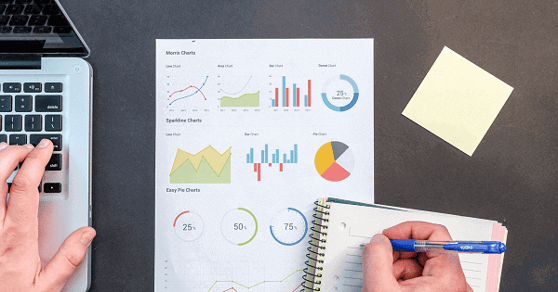When it comes to data and numbers, conventional wisdom tells us to be weary of small sample sizes. For good reason; if you launch a campaign and happen to convert a website visitor into a customer on the first day, you can’t realistically expect to convert every person who visits your website. It’s just common sense.

However, the difference between a sample size that’s irrelevant and one that actually large enough to be valuable is, ironically, quite small. We recently saw exactly this in a social media campaign we’re running for a client, and it opened our eyes to how important it is to pay attention to data almost as soon as you start tracking it.
What follows is how we found out that the right data can make all the difference to a marketing strategy.
The Existing Social Media Activity
In order to make my point in this post, you’ll need some context on our client’s existing social media presence before we launched campaigns and implemented enhanced measurement and tracking.
Prior to the relatively small data sample that we nonetheless believe gave us a lot of great information, the client had an extremely active social media presence on Twitter, Facebook and LinkedIn. They create regular content for their blog and thus have lots of material to share socially, in addition to the daily content they curate.
Overall, they have a nice social presence and generate engagement and awareness on a regular basis, and have made headway in becoming an authoritative voice within their industry.
The Campaigns
First off, the main reason we suggested running specific campaigns and enhanced tracking for this client was to get a clearer picture of what their marketing efforts were accomplishing. We knew they were getting engagement and exposure with their social activity, but when we tried to dig deeper into what that actually meant, we struggled.
In order to get a better handle on their results, we recommended the client use HubSpot’s marketing software to setup campaigns and track URLs by setting up UTM parameters. There are a variety of apps that’ll do this, but we love HubSpot as it keeps everything central – they also have a social publishing tool – and reports are simple to create.
Next, and this is something we’ve discovered works for our marketing efforts as well, we convinced the client that they need to weave a specific campaign into their everyday social sharing and curating plan. Campaigns could be monthly, quarterly or even longer. All that matters is you make a concentrated effort to let a single exceptional piece of content generate as much engagement – and send as many leads – as it possibly can. This requires full tracking and measurement, hence the reason for the tools, and the time and energy to set everything ip from scratch.
As we’ll soon see, it’s totally worth it.
The Results
There are two helpful insights we believe the client can use immediately, even though it’s only after 3-4 works of enhanced tracking. There are many more interesting trends and data points, but at this point, some of them still need more time. But two actionable insights in less than a month is fantastic!
The first bit of useful information we gleaned from the data for the client deals with the social networks themselves. Of the client’s top 10 most engaging and click on social posts, 50% are LinkedIn posts, 30% are Facebook posts and 20% are tweets.
This isn’t overly surprising for the client, who posts once a day to Facebook and LinkedIn, and tweets multiple times. To be honest, when we saw and analyzed the report, we didn’t recommend changing anything about the posting frequency on any of the platforms. LinkedIn is a once-a-day kind of platform, and posting more often may actually decrease engagement. And while engagement is lower on Twitter – even though there’s more activity – that’s just the fleeting nature of Twitter. We still believe the client needs to remain active on Twitter.
What this does tell us, however, is that the client’s LinkedIn posts are doing a great job of engaging their audience. Now, let’s dig into conversion!

The above is a screenshot of the new session sources for campaign landing pages and, more importantly, the number of new contacts generated by each source. As you can see right off the bat, organic social traffic does probably the best overall job of sending new visitors to the site while also converting them. The number of overall visits isn’t the highest but the contact conversion rate is second only to email, which has sent only 20% the amount of traffic.
Finally, the last thing we realized, which sent us back to our first insight, is that LinkedIn is the third best source for conversions. This confirms that LinkedIn is a not only big driver of engagement for the client, but it also sends traffic that converts at a high rate.
From here, we’ve told the client to continue running their campaigns and maintain active social profiles, with perhaps an extra thought about what they’re sharing on LinkedIn, as well as to begin brainstorming for some LinkedIn-specific campaigns for the future.
The Right Data Makes All the Difference
Marketers (and baseball nerds, and especially marketers who are also baseball nerds) often get hung on sample size issues. Sometimes, these issues are warranted, but other times they blind us from insightful data and trends that we can put to good use after a relatively short period of time. In these cases, the right data makes all the difference, no matter how small the sample.
We’ve shared our recent example of how we learned a lot from only a little bit of data, but we’d love to hear from you! Do you have any good stories about a small sample of data taught you a very big lesson? If so, chime in on Twitter, we’re always discussing this stuff @wsiworld!






